Process approach to management: a fad or a guarantee of success?
Systems theory views a process as a change in a system. Indeed, any activity is an action aimed at achieving a result, which is expressed in the fact that the system acquires a new state. We encounter processes in development, technology, chemistry and even sociology. However, each of us is a daily participant in work processes. As experience shows, company managers often avoid automating and formalizing processes; to them this seems like a not entirely democratic “tightening of the screws.” But in vain. Competent construction and management of processes in a company of any profile helps to ensure adequate interaction between employees, conditioned by responsibility and attention to deadlines. The process approach is not dead - it underlies many fashionable theories of development, company, and personnel management. Today we will tell you where processes are found, how to manage them and whether you need them in principle.
Process approach: from cybernetics to management
Process theory defines a process as a pattern of behavior that involves performing actions. Typically, a process is unaware of the implementation details of each of the actions (the behavior of the system to which it belongs). For example, in the process of approving a document, the company has established the timing and procedure for approval, but the process does not care from which device and in what geographic location the document will be approved. Another important property of the process is its controllability, the ability to be subject to changes from the outside.In general, when talking about CRM and ERP, everyone is used to hearing the concept of “business process” and often discussions come down to how a business process differs from a process. There is a version that the term is a tracing-paper from the English language “business process” (business process) and the compound word business does not carry any load, except for isolating the processes taking place in companies from numerous processes (technical, chemical, biological, etc.). Actually, it’s easy to agree with this version, remembering how, for example, a trial is called simply a process, discarding the attribute.
Important digression: the place of the process in the quality management system (ISO 9001)
In the ISO 9000 quality system certification standards, one of the most important components of achieving quality is the principle of a process approach to the performance of any work. Here's what the GOST R ISO 9001-2008 standard says:“This standard advocates the application of a process approach to the development, implementation and improvement of the effectiveness of a quality management system with the aim of increasing customer satisfaction by meeting customer requirements.
To operate successfully, an organization must define and manage numerous interrelated activities. An activity that uses resources and is managed to transform inputs into outputs can be considered a process. Often the output of one process forms directly the input of the next.
The application of a system of processes in an organization, along with their identification and interaction, as well as the management of processes aimed at obtaining the desired result, can be defined as a “process approach”.
The advantage of the process approach is the continuity of management that it provides at the interface of individual processes within their system, as well as during their combination and interaction.
When applied in a quality management system, this approach emphasizes the importance of:
A) understanding and fulfilling the requirements;
b) the need to consider processes in terms of the value they add;
c) achieving the planned results of the processes and ensuring their effectiveness;
d) continuous process improvement based on objective measurement.
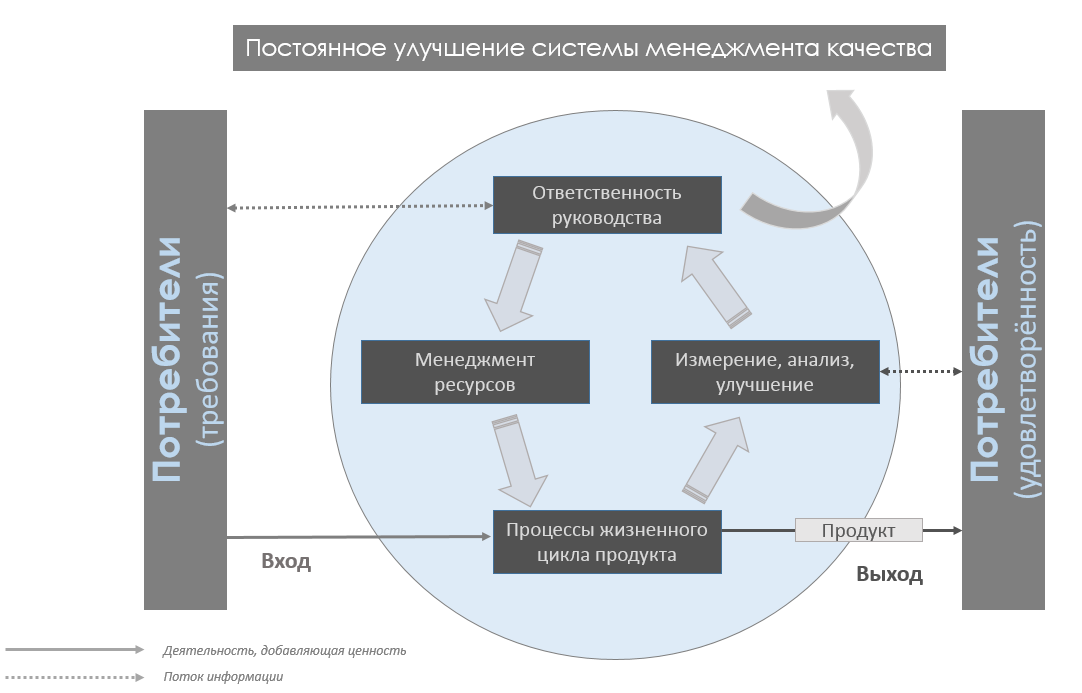
The model of a quality management system based on a process approach shown in the figure illustrates the connections between processes (organizations - author's note). This model shows that customers play a significant role in establishing the requirements considered as inputs. Monitoring customer satisfaction requires assessing information about customers' perceptions that their requirements have been met. The model shown in the figure covers all the main requirements of this standard, but does not show the processes at a detailed level."
Thus, the standard recommends that an organization identify all key activities and learn how to manage them. In turn, an activity that uses resources, has a goal and a result, is already considered as a process. Moreover, often the result of one process serves as the entry point of another. The GOST R ISO 9001:2008 standard itself designates the significant activities of the company as planning, direction, management analysis, resource management (including personnel and infrastructure), product life cycle process management, design and development, measurement, analysis and improvement.
Processes in Ruli24 - how to steer correctly
“Everything is a process” - it was from this position that we proceeded when designing the Ruli24 system. In the post about the growth of companies there were diagrams that reflected three main groups of processes in any company, regardless of its structure, commercialization and legal form.- Leadership processes. They come down to three components: organization, leadership, management. For these processes, it is important to implement a competent software process for coordination, analysis and data collection.
All analytics are built in reports: the user can make the selections he needs and analyze sections using filters, graphical, tabular and checkerboard views.
- Basic processes. They strongly depend on the type of activity of the company, but almost always include marketing, supply, and promotion.
- Supporting Processes - elements of direct production and support of core activities. This includes personnel management, financial management, security, IT infrastructure, accounting, etc.
In addition to this division, there is a division described above: into research, design, production and information processes. They are not only interconnected, but also act in relation to any object or its part.
The process management mechanism includes the organization of work regarding the four specified types of processes. Each process has its own order of execution, form of control and expected result. The input and output of the process are works.
The system provides several forms of work management. The use of one form or another is determined both by the specifics of various types of activities and by organizational aspects. Work with information processes carried out using control forms:
- “Incoming document” - registration of external incoming documents;
- “Outgoing document” - registration of documents sent to external organizations;
- “Request” is a universal mechanism for official correspondence, regardless of the administrative hierarchy of relationships.
- “Forum” - registration of collective work, distribution of internal documents, discussion mechanism;
- “Meeting” is a mechanism for scheduling meetings.
- “Subjects” - the form is used to highlight works in certain areas;
- “Project” - the form is used to group work into specific projects;
- “Total work” is the registration of work of a general nature, which includes work assigned to specific performers.
- “Project task” - registration of a specific task to the contractor for the project.
- “Business process” - the form is based on a description of the sequence of work to achieve a certain result.
- “Task” is a form by which work is organized and execution is monitored, depending on the hierarchy of service relationships
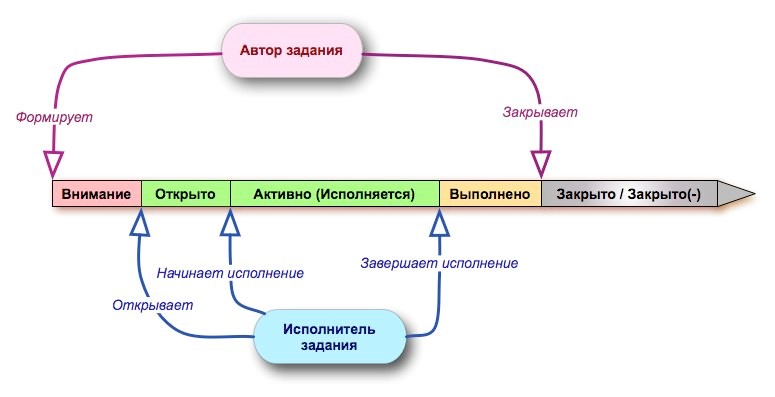
During the execution of work, the following functions are performed:
- Creating a new job - as a result, a record is created in the system with a description of the job in the “Attention” state.
- Familiarization with the work – the work is transferred to the “Open” state.
- Execution of work – the work is transferred to the “Active” state.
- Registration of the fact of execution - enter the completion date of the work and a report on the work performed. The job is moved to the Completed state.
- Closing a job – the author of the job checks the fact that the job has been completed and transfers it to the “Closed” state. If the result of the work performed is unsatisfactory, the author transfers the work to the “Closed (-)” state.
If you are reading the post not for the sake of interest in the process approach, but are choosing a CRM or a suitable automation system for all components of your business, look under the spoiler - it clearly shows the implementation of processes in the Ruli24 interface.
Slides, slides!
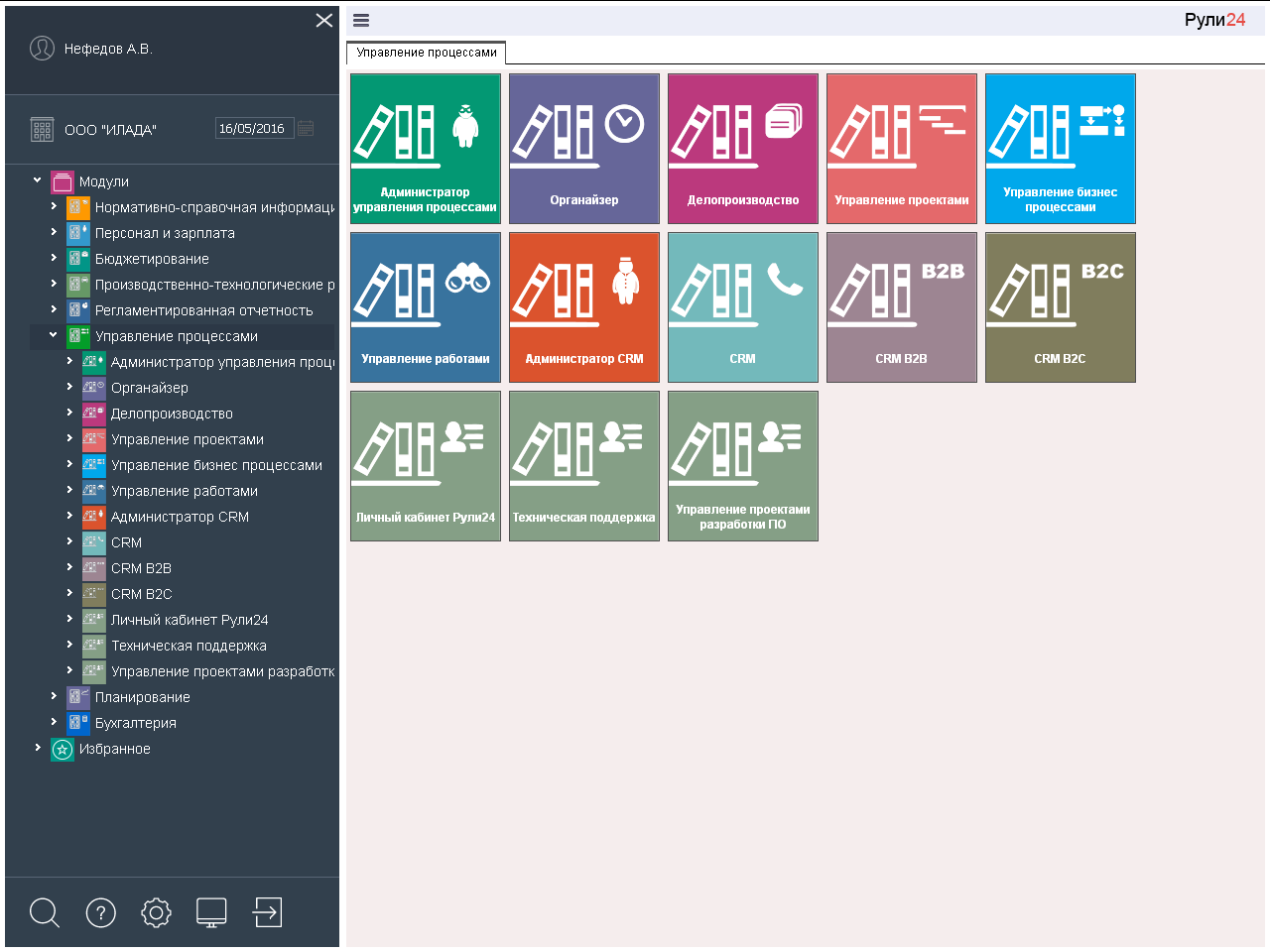
Ruli24 Process management– includes 13 tasks.
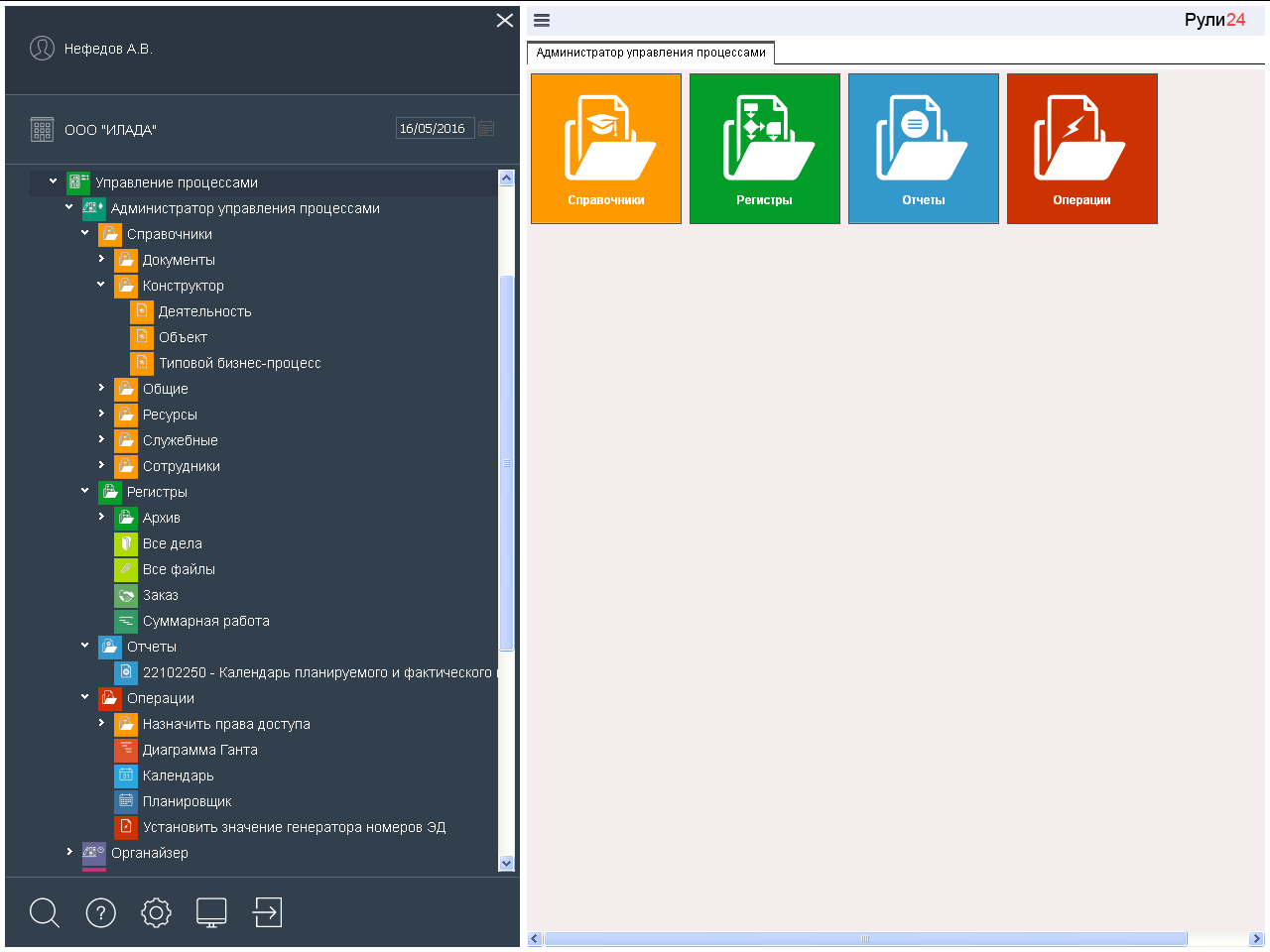
Ruli24 Process Management Administrator– allows you to configure activities, objects and user rights.
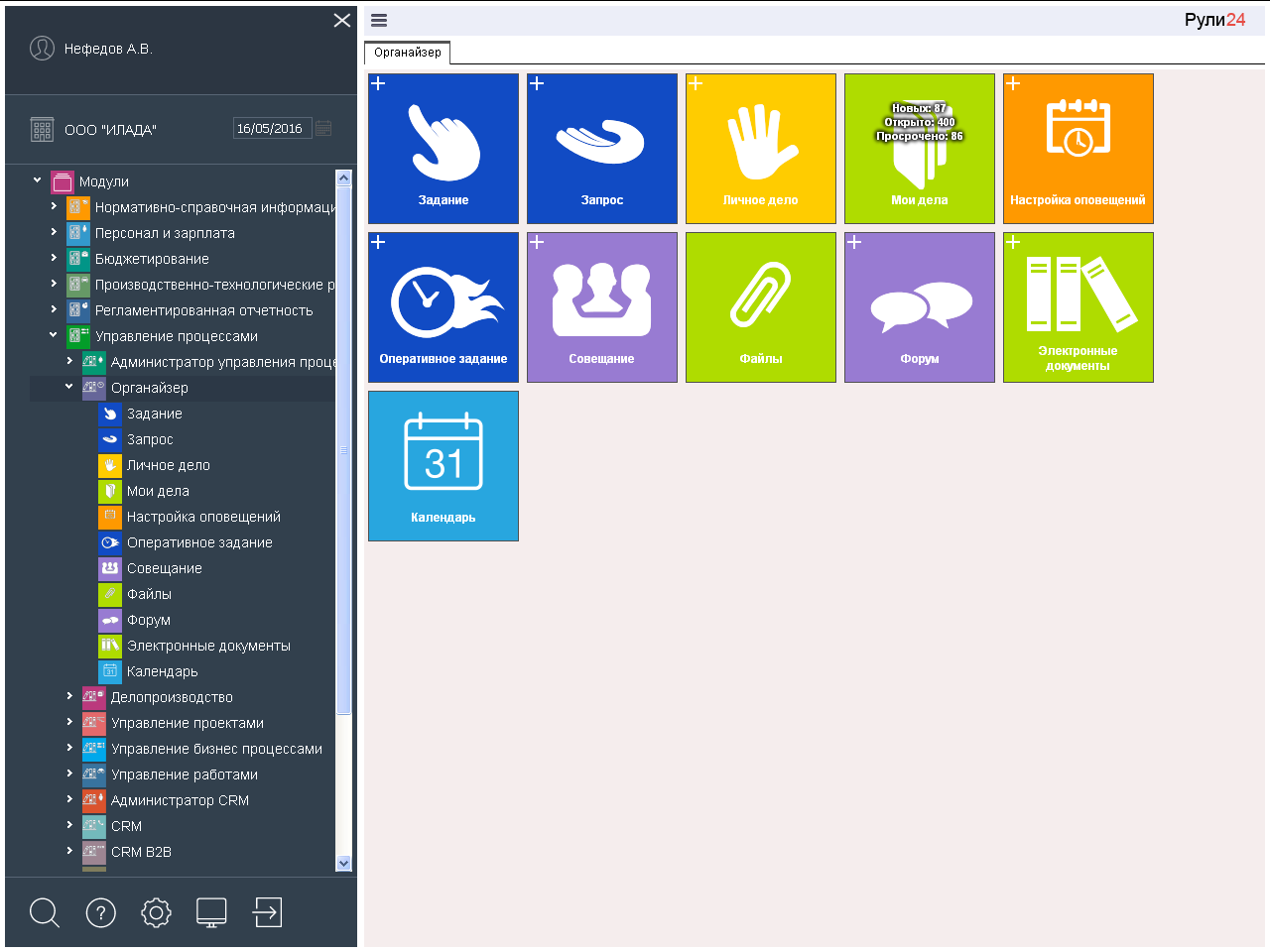
Ruli24 Organizer allows you to conduct both personal and collective time management. Here, personal affairs, simple production (tasks, requests, operational tasks) and research work (meetings and forums) are planned and controlled. Planning can be done through your calendar or through an employee’s calendar. Various types of files and electronic documents are also available here. All types of work are available in the “My Cases” folder, where widgets reflect new, open and overdue cases.
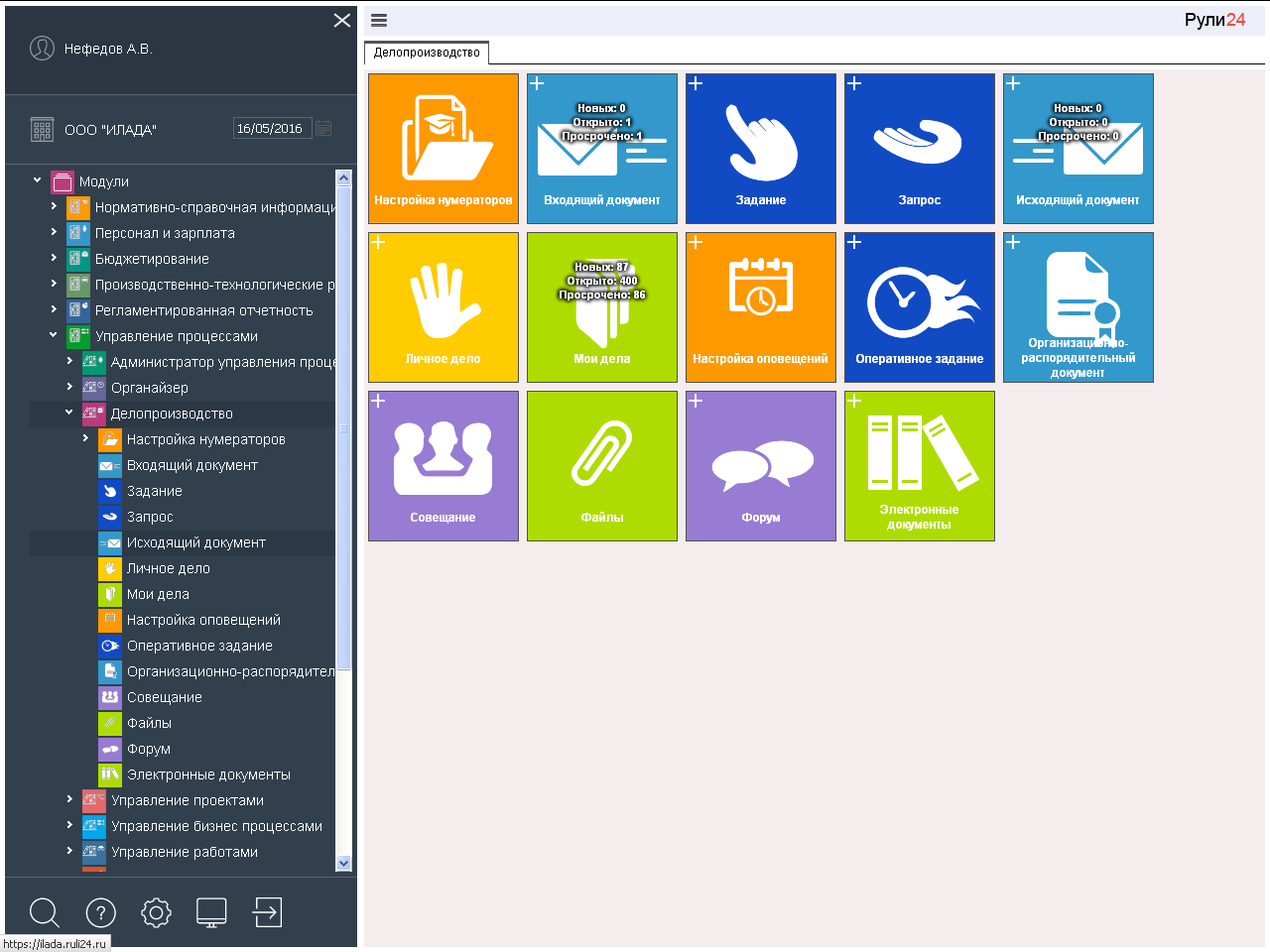
In the problem Ruli24 Office work
Incoming, Outgoing and Organizational distribution documents are added to the Organizer objects. Now these documents are also available in the “My Cases” folder.
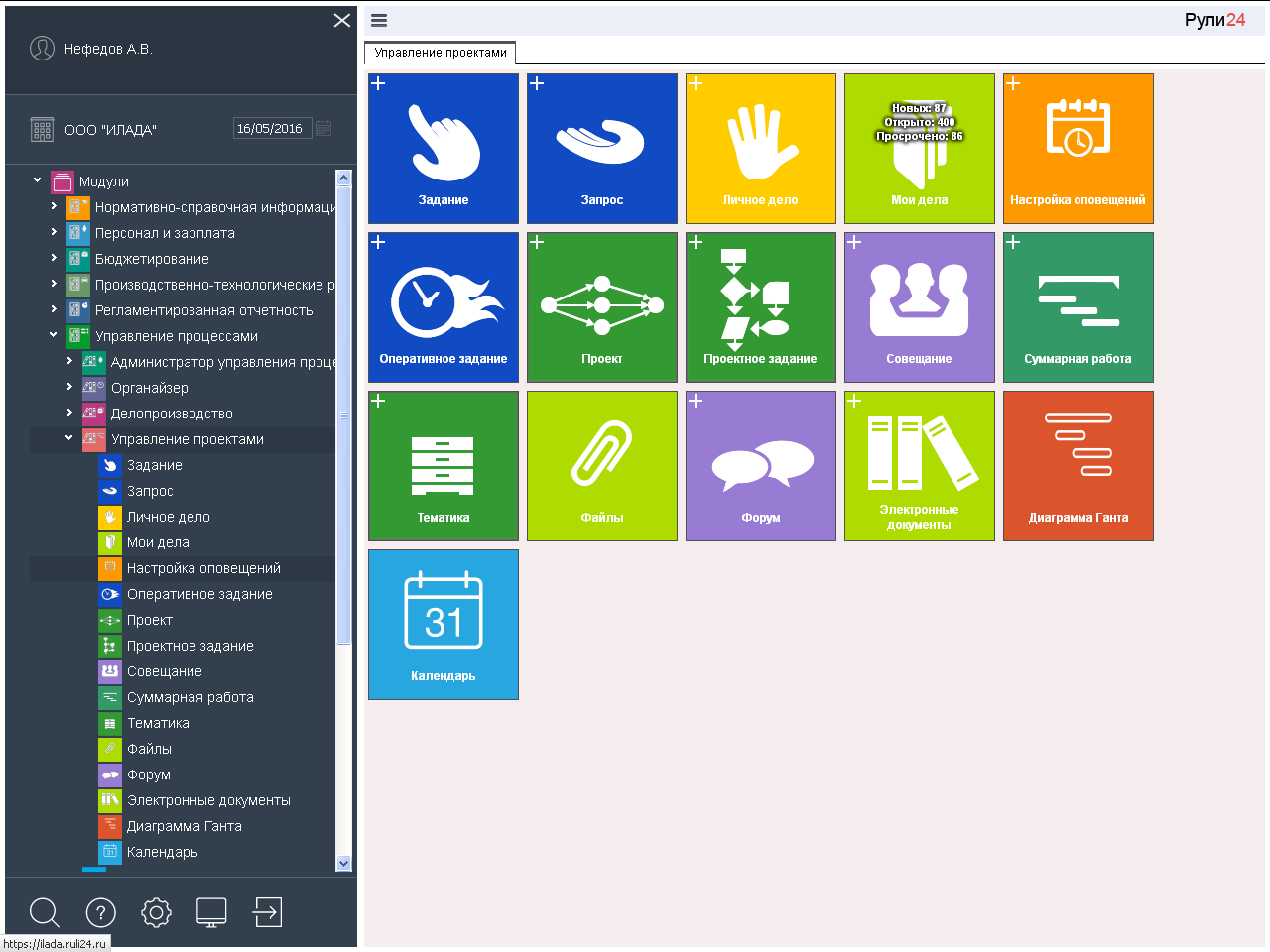
In the problem Ruli24 Project Management
Subject, Project, Summary Work, Project Task are added to the Organizer objects. All these works can be seen not only in the Calendar, but also on the Gantt chart and in the Planner. Now these works are also available in the “My Cases” folder.
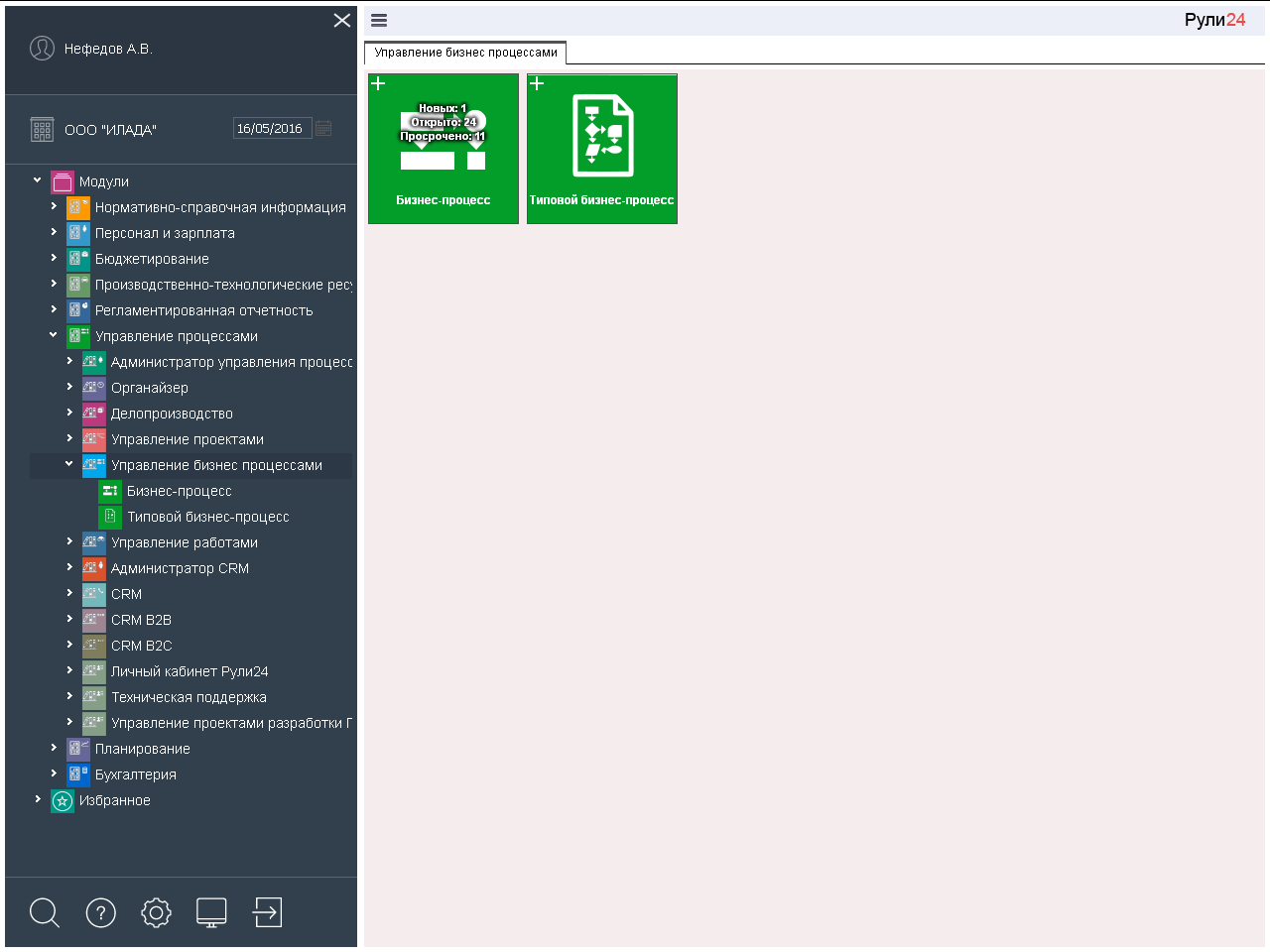
In the problem Ruli24 Business process management
you can create standard business processes and launch and monitor instances of business processes.
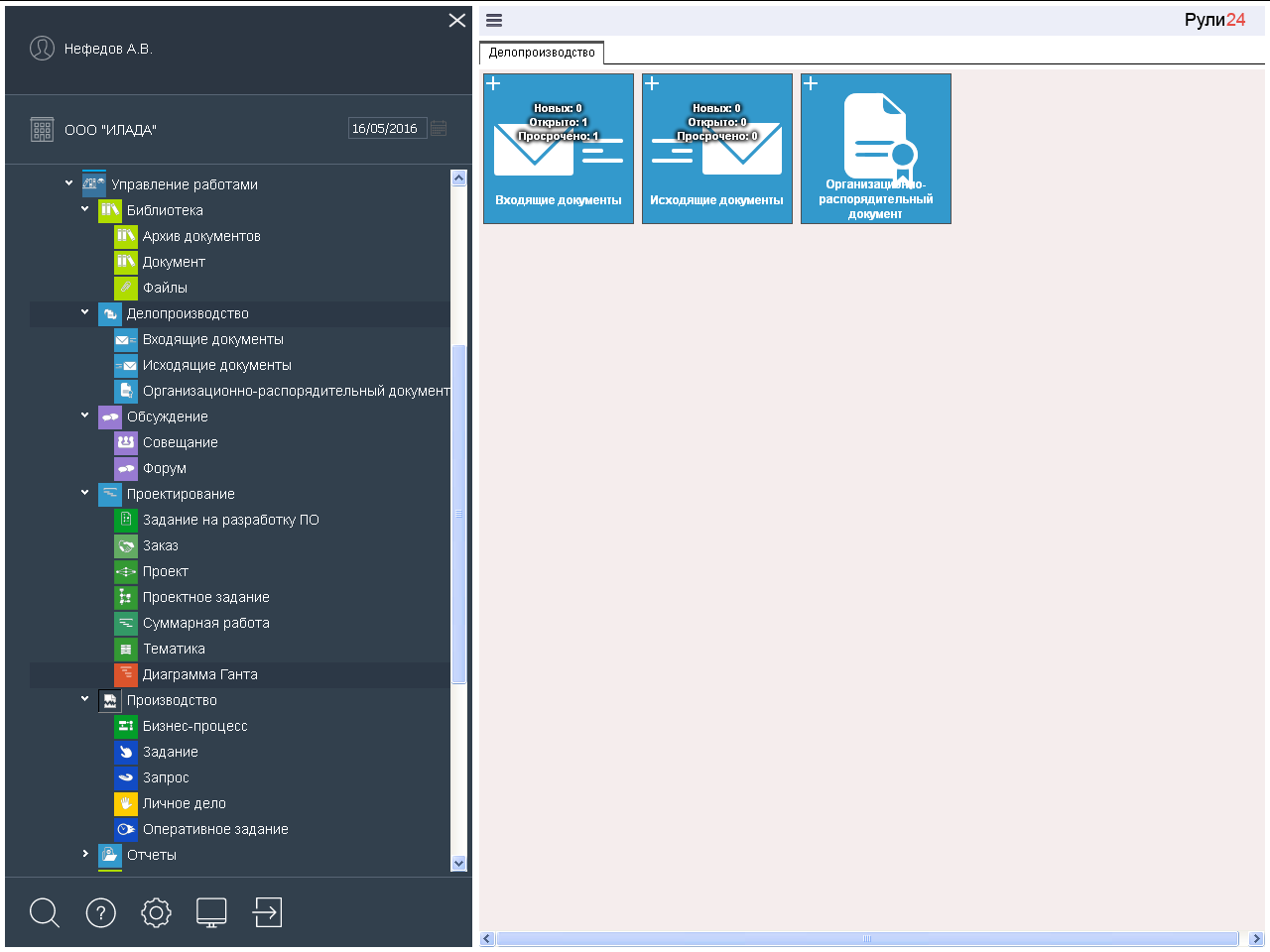
In the problem Ruli24 Work management collected all the work from the research process (discussion), from the information process (office work), the design process (design) and the production process (production). Now all the work from these processes is available in the “My Cases” folder.
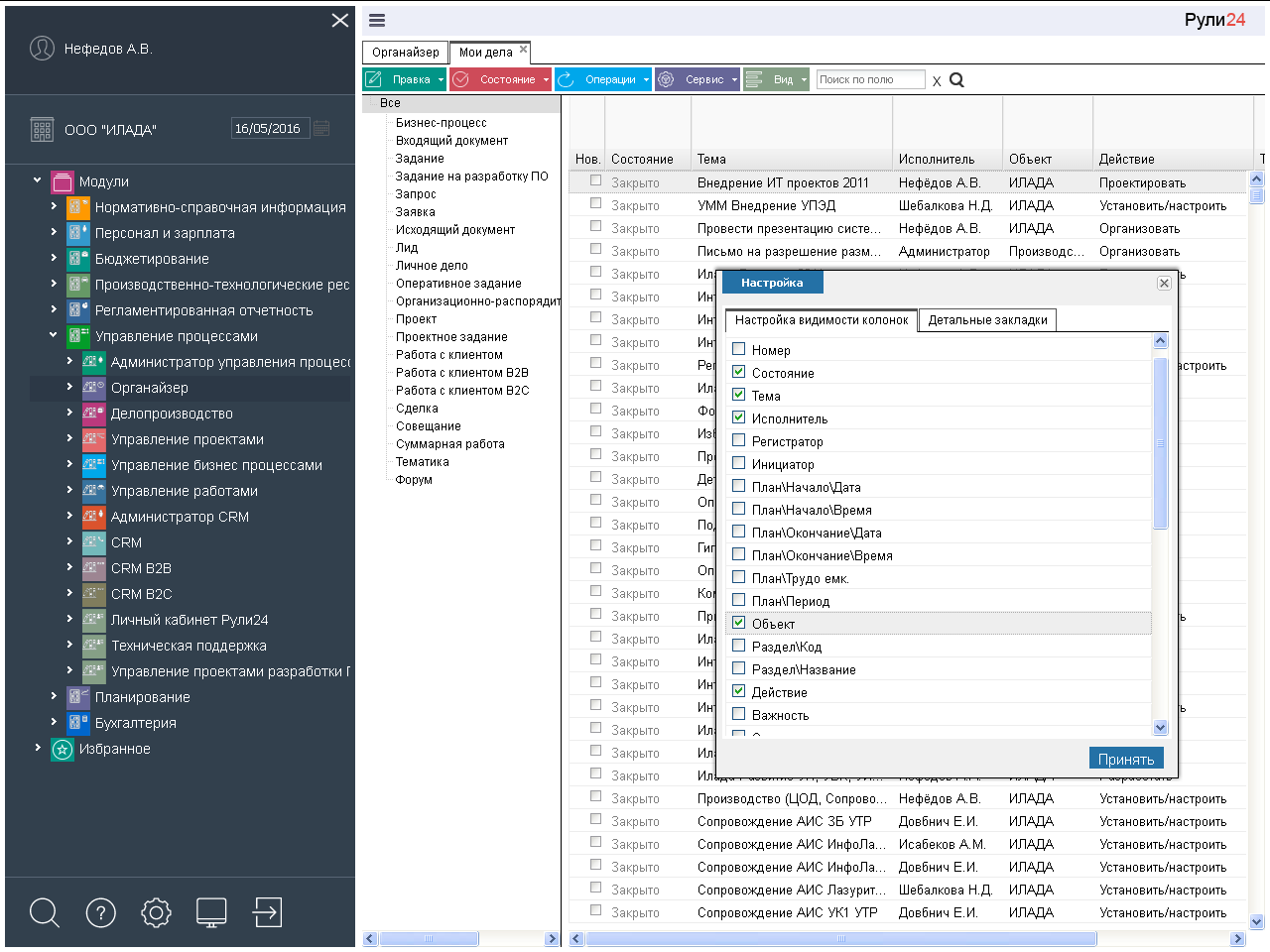
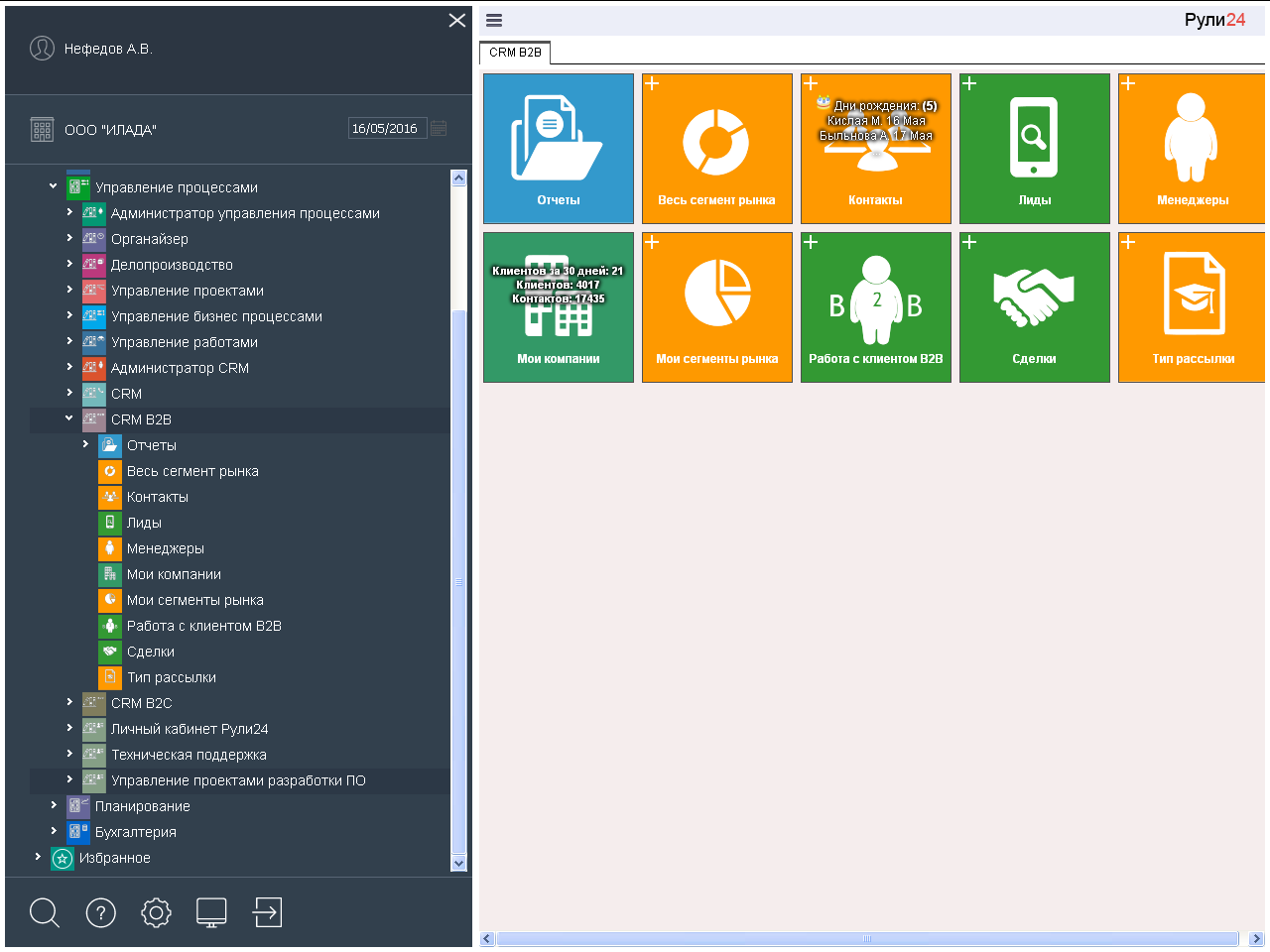
In the problem Ruli24 CRM Administrator, CRM, CRM B2B, CRM B2C, Leads, Transactions, Work with B2B clients, Work with B2C clients are added. Work from CRM is now available in the “My Cases” folder.
Conventionally speaking, all processes within an organization lie between requirements and customer satisfaction. And this is precisely the main process of production of goods (goods, work, services). Let's look at the example of our client. There is a bank, it has Ruli24, as we joke, in the “luxury” configuration. The bank has two types of clients: legal entities and individuals. They make demands on products: they open accounts, conduct transactions, make deposits. They make demands on the level of service, want a client bank, a mobile version, mailing lists, etc. The bank satisfies the requirements, and all processes take place within the Ruli24 system: from accounting to product portfolio analytics and internal ticket system. At the same time, all processes are interconnected, which reduces the average service time and simplifies the collection of business information, on the basis of which new product offers are formed.
However, a system for managing processes in a company is needed not only by such colossians as banks, but also by almost any company. For a deeper understanding of the process approach, you can apply the so-called Deming-Shewhart cycle “Plan - Do - Check - Act” (PDCA). It is "plan - act - check - improve action". Using this cycle allows you to continuously implement continuous process improvement aimed at increasing the efficiency of the organization. This concept was deeply reflected in the development. This is what the volumetric management model looks like, which underlies the idea of the entire system. If you imagine the model as interactive, the relationships and intersections of all components become clear.
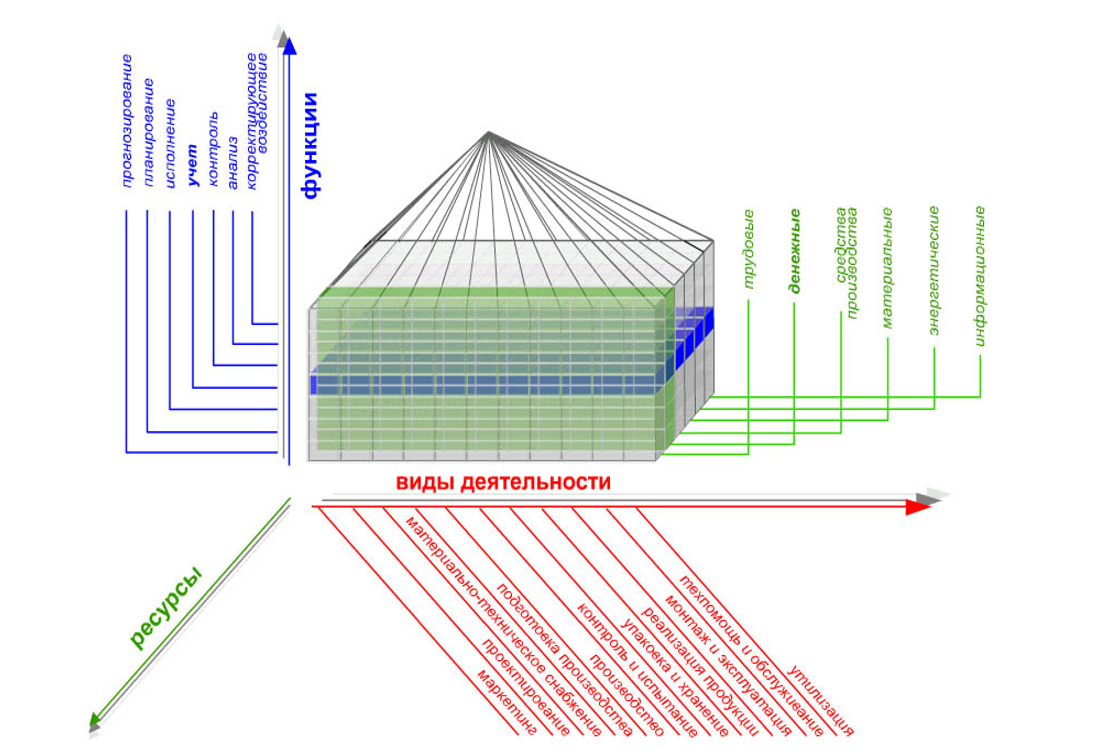
The process description form below resembles a PERT diagram, i.e. network schedule. The difference is that not all work can be performed in a specific implementation of the production process, depending on the “crossroads” conditions. In addition, each job can be further defined (in some of its attributes) depending on the conditions in the process description. But, as we remember, the process does not know about the implementation of procedures and instructions within it.
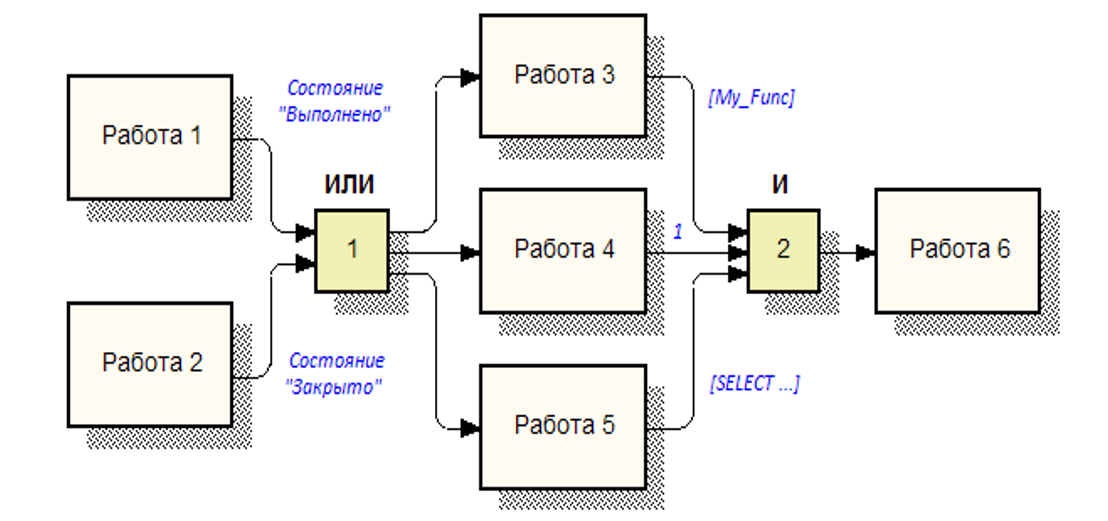
So, we have decided on the model and will draw up an approximate checklist for managing processes in your company.
- Atomize processes. Each process should be an independent regulated unit, then it will be easier for you to manage the company as a whole. In addition, in the case of organizing company automation as a combination of many small processes, it is easier to identify and correct the weak link; there is no need to interfere with large-scale processes. And this saves a lot of time and does not allow work to stop.
- Structure your processes. Each process must have an owner, responsible persons, entry and exit points, procedures within, a goal and a result. The process must have time parameters and metrics for its successful/unsuccessful completion. It only looks like bureaucracy from the outside - the human brain quickly adapts to the convenience of automation, and also receives an additional “bonus”: you don’t need to keep everything in your head, reminders and notifications will do the work for the manager.
- Link processes- this is the only way to achieve an effective management model. Connections and dependencies between atomized processes will allow you to collect maximum information about leads, clients, work results, etc., and streamline and significantly speed up the activity itself.
- Use a suite of process management tools(reports, funnels, Gantt chart, plans). This will allow you to quickly identify problem areas and make changes.
- Continuously work with processes and improve them. Even if the best experts in the industry, your company and Ruli24 developers gather in one place, it will not be possible to create an ideal process and establish management. After the next iteration, it is necessary to review the process parameters, analyze its progress and results, and compare them with expectations. after several runs, you will be able to create the most polished “gear” processes that, without exaggeration, will help your company run like clockwork.
- Include suppliers, contractors, part-time workers, and freelancers in the processes. The more elements you take into account, the more controllable your company will be for you. Most business automation systems (and Ruli24 is no exception) are open to connecting external agents, but this feature is rarely used. We must remember that everyone on whom the result depends is significant.
- Draw processes on paper, correct in work groups, distribute resources. Introduce a clear process with unambiguous nodes, stages and transitions into the business automation system.
More than business processes Add tags
 Discounted payback period
Discounted payback period Methodological aspects of project management
Methodological aspects of project management Scrum development methodology
Scrum development methodology